30.10.2024
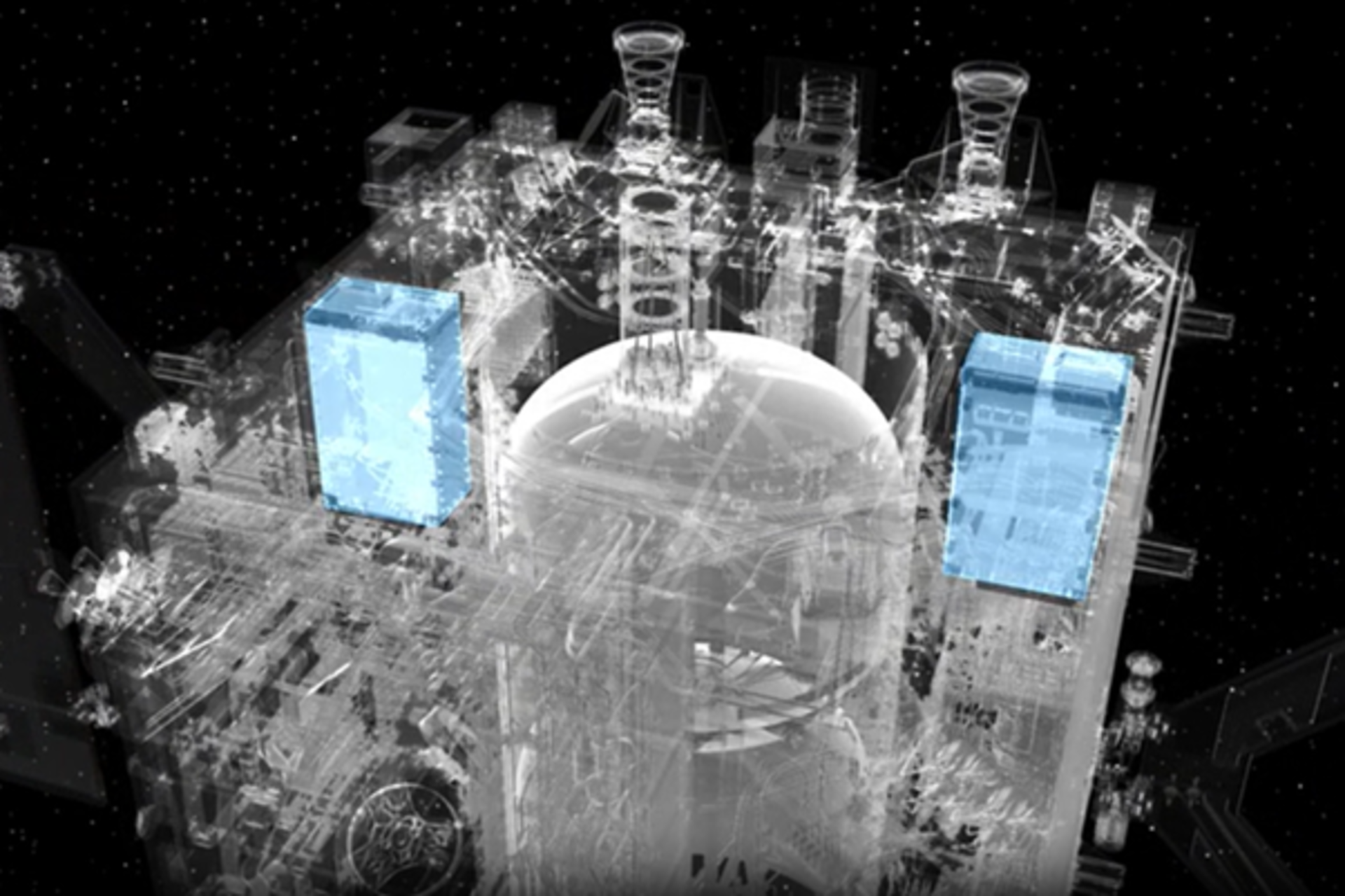
The two CubeSat passengers aboard ESA’s Hera mission for planetary defence have exchanged their first signals with Earth, confirming their nominal status. The pair were switched on to check out all their systems, marking the first operation of ESA CubeSats in deep space.

“Each CubeSat was activated for about an hour in turn, in live sessions with the ground to perform commissioning – what we call ‘are you alive?’ and ‘stowed checkout’ tests,” explains ESA’s Hera CubeSats Engineer Franco Perez Lissi.
“The pair are currently stowed within their Deep Space Deployers, but we were able to activate every onboard system in turn, including their platform avionics, instruments and the inter-satellite links they will use to talk to Hera, as well as spinning up and down their reaction wheels which will be employed for attitude control.”

Launched on 7 October, Hera is ESA’s first planetary defence mission, headed to the first Solar System body to have had its orbit shifted by human action: the Dimorphos asteroid, which was impacted by NASA’s DART spacecraft in 2022.
Travelling with Hera are two shoebox-sized ‘CubeSats’ built up from standardised 10-cm boxes. These miniature spacecraft will fly closer to the asteroid than their mothership, taking additional risks to acquire valuable bonus data.

Juventas, produced for ESA by GOMspace in Luxembourg will make the first radar probe within an asteroid, while Milani, produced for ESA by Tyvak International in Italy, will perform multispectral mineral prospecting.
The commissioning took place from ESA’s ESOC mission control centre in Darmstadt in Germany, linked in turn to ESEC, the European Space Security and Education Centre, at Redu in Belgium. This site hosts Hera’s CubeSat Mission Operations Centre, from where the CubeSats will be overseen once they are flying freely in space.
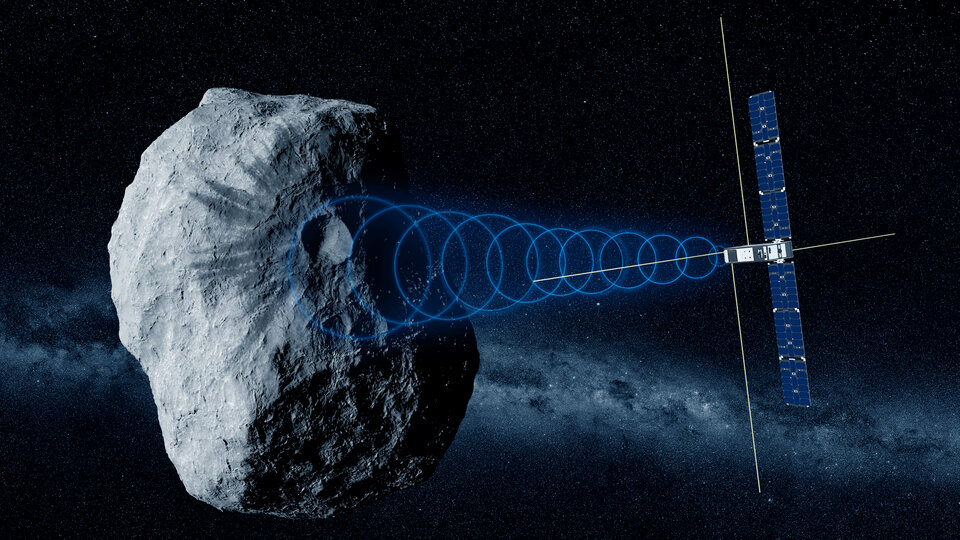
Juventas was activated on 17 October, at 4 million km away from Earth, while Milani followed on 24 October, nearly twice as far at 7.9 million km away.
The distances involved meant the team had to put up with tense waits for signals to pass between Earth and deep space, involving a 32.6 second round-trip delay for Juventas and a 52 second round-trip delay for Milani.
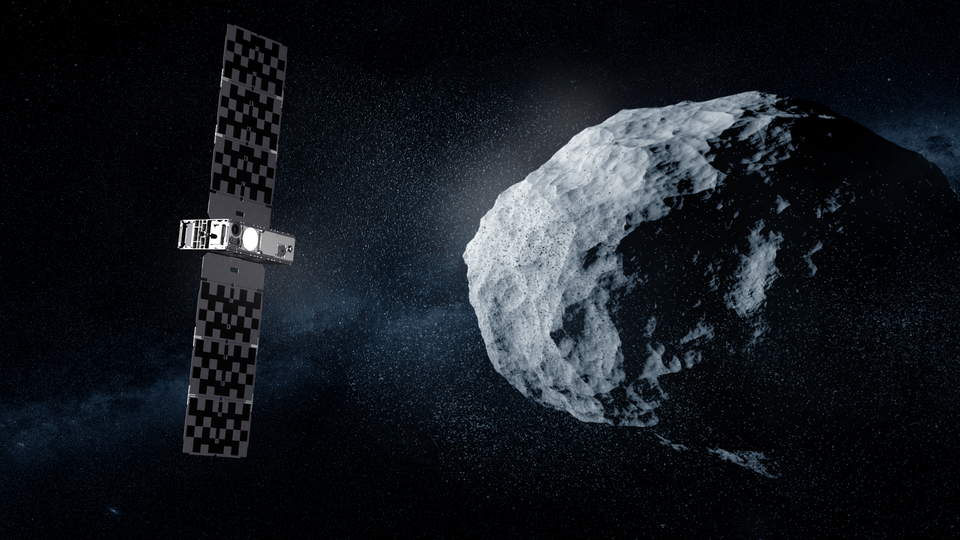
“During this CubeSat commissioning, we have not only confirmed the CubeSat instruments and systems work as planned but also validated the entire ground command infrastructure,” explains Sylvain Lodiot, Hera Operations Manager.
“This involves a complex setup where data are received here at the Hera Missions Operations Centre at ESOC but telemetry also goes to the CMOC at Redu, overseen by a Spacebel team, passed in turn to the CubeSat Mission Control Centres of the respective companies, to be checked in real time. Verification of this arrangement is good preparation for the free-flying operational phase once Hera reaches Dimorphos.”

Andrea Zanotti, Milani’s Lead Software Engineer at Tyvak, adds: “Milani didn’t experience any computer resets or out of limits currents or voltages, despite its deep space environment which involves increased exposure to cosmic rays. The same is true of Juventas.”
Camiel Plevier, Juventas’s Lead Software Engineer at GomSpace, notes: “More than a week after launch, with ‘fridge’ temperatures of around 5°C in the Deep Space Deployers, the batteries of both CubeSats maintained a proper high state of charge. And it was nice to see how the checkout activity inside the CubeSats consistently warmed the temperature sensors throughout the CubeSats and the Deep Space Deployers.”

The CubeSats will stay within their Deployers until the mission reaches Dimorphos towards the end of 2026, when they will be deployed at very low velocity of just a few centimetres per second. Any faster and – in the ultra-low gravitational field of the Great Pyramid-sized asteroid – they might risk being lost in space.
Franco adds: “This commissioning is a significant achievement for ESA and our industrial partners, involving many different interfaces that all had to work as planned: all the centres on Earth, then also on the Hera side, including the dedicated Life Support Interface Boards that connects the main spacecraft with the Deployers and CubeSats.

“The concept that a spacecraft can work with smaller companion spacecraft aboard them has been successfully demonstrated, which is going to be followed by more missions in the future, starting with ESA’s Ramses mission for planetary defence and then the Comet Interceptor spacecraft.”
From this point, the CubeSats will be switched on every two months during Hera’s cruise phase, to undergo routine operations such as checkouts, battery conditioning and software updates.
Quelle: ESA
----
Update: 9.11.2024
.
Hera burns towards Mars
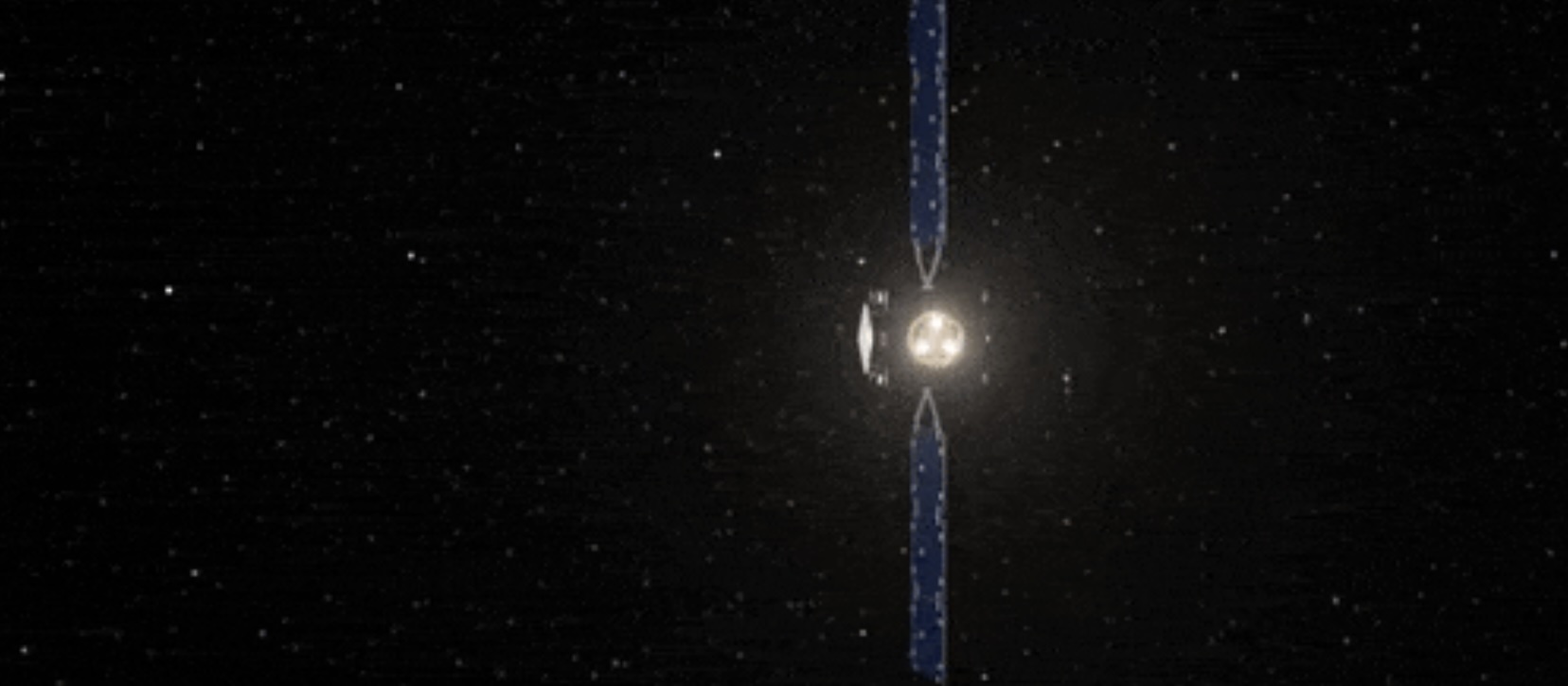
On 23 October, Hera fired its three orbital control thrusters for 100 minutes, kicking off its first deep-space manoeuvre and changing its velocity by approximately 146 m/s. A second burn on 6 November lasted 13 minutes with the aim of providing an additional boost of around 20 m/s.
Together, these burns have put Hera on a trajectory that will enable a gravity assist at Mars in March 2025.
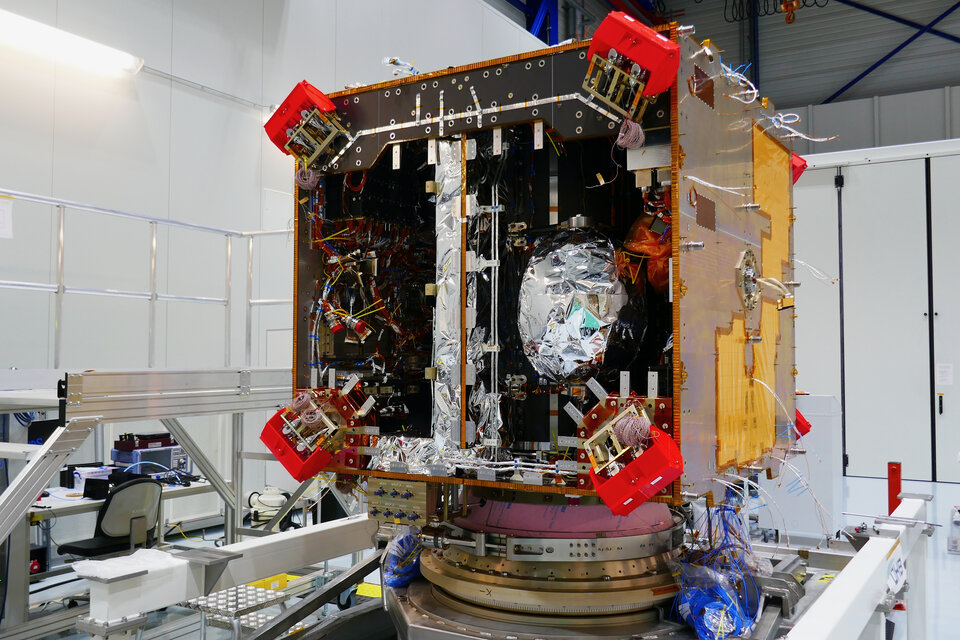
“Deep-space manoeuvres are often split into parts,” explains Sylvain Lodiot, Hera Spacecraft Operations Manager. “The first, larger burn does most of the work. Then, after precisely measuring the spacecraft’s trajectory, we use the second, smaller burn to correct any inaccuracy and provide the rest of the required boost.”
The manoeuvre followed three successful test burns performed in the weeks after launch by Hera’s control team at ESA’s European Space Operations Centre (ESOC) in Germany.

The team used the Agency’s deep space radio dishes in Spain, Argentina and Australia to track Hera during the manoeuvre and to precisely measure its velocity before and after each burn.
“We are now analysing Hera’s new trajectory following the second burn,” says Francesco Castellini from ESOC’s Flight Dynamics team, the mathematical experts that keep ESA missions across the Solar System on track.
“It appears to have gone very well. We will execute a much smaller correction manoeuvre of a few tens of cm/s on 21 November to fine-tune the trajectory for the upcoming Mars flyby.”
Mars lends a hand
Hera is on a two-year journey to the Didymos binary asteroid system, where it will analyse the results of humankind’s first asteroid deflection experiment.
The recent deep-space manoeuvre was carefully calculated to line Hera up for a gravity assist in March 2025 that will shorten the travel time to Didymos.
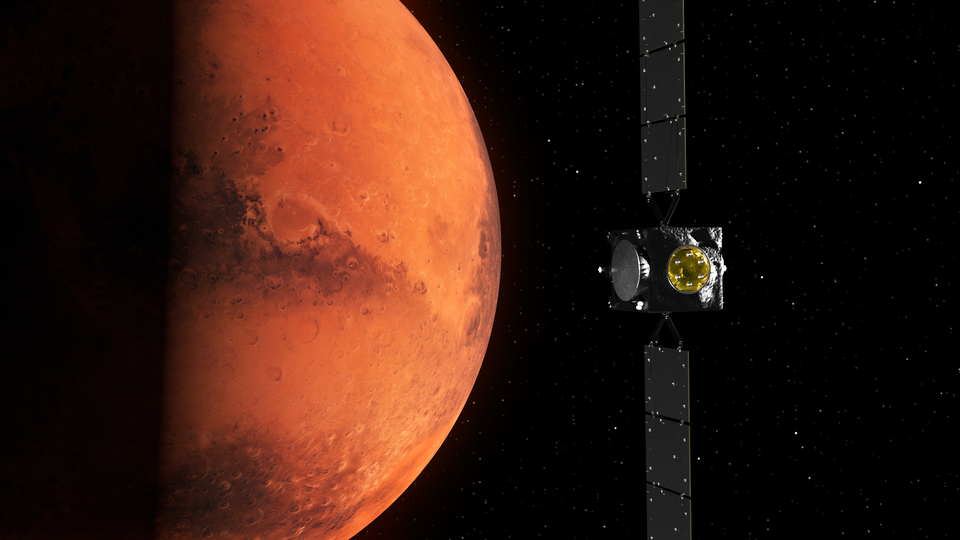
“We are very fortunate that Mars is in the right place at the right time to lend a hand to Hera,” says Pablo Muñoz from ESOC’s Mission Analysis team, who planned Hera’s journey.
“This enabled us to design a trajectory that uses the gravity of Mars to accelerate Hera towards Didymos, offering substantial fuel savings to the mission and allowing Hera to arrive at the asteroids months earlier than would otherwise be possible.”
Hera will also use the Mars flyby for some opportunistic science. The ESA teams have designed a trajectory that will see the spacecraft fly past Deimos at a distance of just 300 km before passing Mars itself, offering a rare chance to study this small and mysterious martian moon.
Hera will then carry out a second deep space manoeuvre in February 2026 before a sequence of rendezvous manoeuvres from October to December 2026 brings it into proximity of the asteroids.
At Didymos, Hera will begin its mission to answer questions such as: How and why do binary asteroid systems form? When NASA’s DART mission impacted Didymos’s moonlet Dimorphos in 2022, did it leave a crater, or did it reshape the entire asteroid? What is Dimorphos’s internal structure?


Access the video
Asteroid community gathers at ESOC

It’s a busy time for ESA’s asteroid teams. October saw the launch of the Agency’s first asteroid mission, Hera, and the start of work on its second asteroid mission, the proposed Ramses mission to asteroid Apophis.
Meanwhile, ESA’s Near-Earth Object Coordination Centre has continued discovering, tracking and analysing new asteroids from the ground and recently helped to identify the tenth asteroid ever discovered prior to Earth impact.
Next week, a team from the Agency's Planetary Defence Office will meet with experts from around Europe and beyond at ESOC in Germany to discuss how to more accurately measure the size of potentially hazardous near-Earth asteroids. This workshop is funded by the European Commission.
Quelle: ESA
----
Update: 17.11.2024
.
Europe's Hera asteroid probe heads for Mars after engine burn

